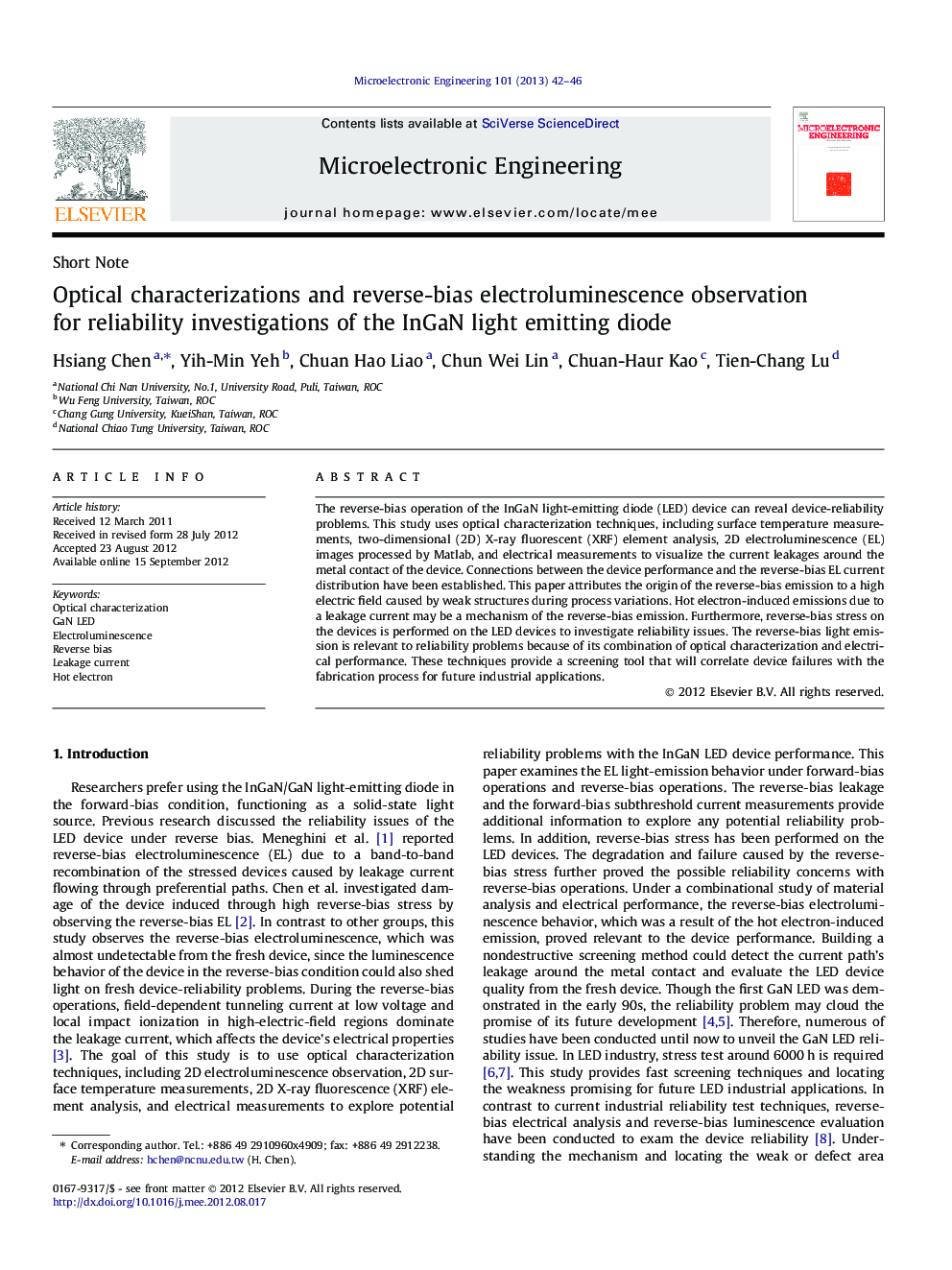| کد مقاله | کد نشریه | سال انتشار | مقاله انگلیسی | نسخه تمام متن |
|---|---|---|---|---|
| 540260 | 1450380 | 2013 | 5 صفحه PDF | دانلود رایگان |

The reverse-bias operation of the InGaN light-emitting diode (LED) device can reveal device-reliability problems. This study uses optical characterization techniques, including surface temperature measurements, two-dimensional (2D) X-ray fluorescent (XRF) element analysis, 2D electroluminescence (EL) images processed by Matlab, and electrical measurements to visualize the current leakages around the metal contact of the device. Connections between the device performance and the reverse-bias EL current distribution have been established. This paper attributes the origin of the reverse-bias emission to a high electric field caused by weak structures during process variations. Hot electron-induced emissions due to a leakage current may be a mechanism of the reverse-bias emission. Furthermore, reverse-bias stress on the devices is performed on the LED devices to investigate reliability issues. The reverse-bias light emission is relevant to reliability problems because of its combination of optical characterization and electrical performance. These techniques provide a screening tool that will correlate device failures with the fabrication process for future industrial applications.
Forward-bias emission of a GaN LED with and without a 550 nm high pass filter. Reverse-bias emission of a GaN LED with and without a 550 nm high pass filter.Figure optionsDownload as PowerPoint slideHighlights
► The reverse-bias luminescence of the InGaN LED reveals device-reliability problem.
► Surface temperature measurements and two-dimensional XRF have been investigated.
► Hot electron-induced emissions may be a mechanism of the reverse-bias emission.
► Reverse-bias stress is performed to investigate reliability issues.
► These techniques promise a screening tool.
Journal: Microelectronic Engineering - Volume 101, January 2013, Pages 42–46